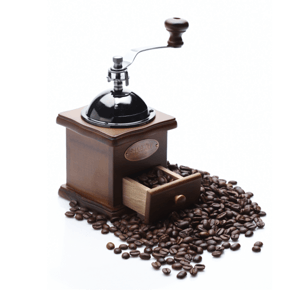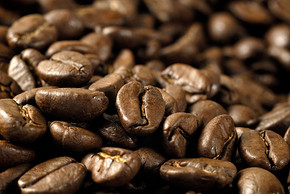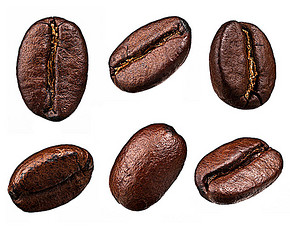Detailed introduction of the flavor of Peruvian coffee bean producing area
Follow the caf é (Wechat official account vdailycom) and found that Beautiful Cafe opened a small shop of its own.
Coffee beans details:
Country: Peru
Producing area: Kahamaka
Altitude: 1800-2000 m
Treatment: washing
Variety: Tibika, Kaddura, Bourbon, Kaduai
Producer: sunshine Co-operative
Flavor: nuts, caramel, cream

Sunshine Cooperative (SOL Y COOP) was established in 2005, located in the Cajamarca coffee producing area of Peru (Peru) in South America, the eastern mountains of the Andes Mountains, the cooperative is surrounded by natural primeval rainforest, a large amount of fine sand provides a well-drained soil, the daily afternoon intermittent rain brings abundant Rain Water and moisture, and native animals and plants create natural shade and natural organic matter to increase soil fertility. At the same time, with the funding and support of the USAID and the Hong Kong Caritas Caritas Jaen technical team, the Sunshine Cooperative has established its foundation steadily, but the members of the cooperative are not spoiled by the perfect background. They continue to recruit local aborigines to join the cooperative, help small farmers' life, and continue to carry forward the mysterious and wonderful unique flavor and charming cultural customs of Peruvian coffee.
Sunshine cooperatives are committed to protecting their land and environment, believing that natural traditional farming methods are sustainable, using only manual harvesting and processing, and abandoning convenient mechanized processes. their efforts not only passed organic certification, rainforest certification and fair trade certification in 2006 and 2007, but also set up sunshine cafes in various places in 2008. Continue to spread the cooperative's high-quality coffee and its concept, and strive for the most important health protection and coffee sharing truth for all future generations and lives. This kind of coffee can set off the bright and beautiful honey lemon fragrance when roasted lightly and moderately, then turn out almonds and milk chocolate, and then the sweet candied lemons refresh the taste window on the tip of the tongue again. City-baked beans enrich the smell, with aromas of jasmine, spices, tropical fruits, honey, vanilla, candied fruit and caramel brought out by intense bitter sweet chocolate, balanced with crisp acidity and creamy taste.
Peruvian coffee seems to be unknown and rarely noticed, but in fact, it has a very good flavor. Most Peruvian coffee has moderate acidity and mellowness, although most of the coffee makers use it as the ingredient of comprehensive coffee, but I think some secret coffee has a primitive flavor, even as a single product.
Before the 1980s, Peruvian coffee agriculture was almost interrupted due to political, economic and social problems, and few □ came to the international market. therefore, the secret beast caffeine was gradually forgotten, and it was not until the mid-1990s that it gradually recovered.
But as a result, Peruvian coffee gardens mostly retain the old species, with "Tippica" and "bourbon species" as tempeh, unlike other neighboring countries where Dali is replaced by a new species with high yield. In addition, Peruvian coffee is mostly grown in shade: raw beans are washed, but dried in the sun, and natural fertilizers are used instead of chemical fertilizers, so Peru has a lot of organic coffee. and it has become the best coffee producing area with the best environmental conditions. In recent years, with the rise of choice coffee in the United States, more and more people need old coffee, and Peruvian coffee has gradually gained attention. Because Peruvian coffee is grown in a natural way, its coffee has a thick aroma and a full mellow taste. In a cup test (Cupping), the author once met Peruvian nkaico coffee, which was all roasted. After the cup test, everyone said it was good coffee. The coffee growing area in Peru is small, only about 215000 hectares, mostly cultivated by small farmers, with an average of only 2 to 3 hectares per household. The coffee garden is almost entirely located on the eastern slope of the Andes, with nine main planting areas from north to south.
Although most of the industry uses it as the ingredient of comprehensive coffee, the author thinks that some secret coffee has the original flavor, even as a single product.
Important Notice :
前街咖啡 FrontStreet Coffee has moved to new addredd:
FrontStreet Coffee Address: 315,Donghua East Road,GuangZhou
Tel:020 38364473
- Prev

History of coffee cultivation in Peru
Pay attention to the coffee comment (Weixin Official Accounts vdailycom ) and find that the beautiful cafe opens its own small shop Peru is a huge and diverse land for them to produce a large number of different kinds of coffee beans. Peru can produce very high quality Peruvian coffee. Overall, these beans have a Central American sheen but are packaged with South American flavors. Good organic grounds, yes.
- Next

Peruvian fine coffee beans wet processing and clean bright taste introduction
Pay attention to coffee comment (Weixin Official Accounts vdailycom ) and find a beautiful cafe to open its own shop Peru is located in the west of South America, with a coastline of 2254 kilometers. The Andes runs through the north and south, and the mountains account for 1/3 of the country's area. They belong to the tropical desert area and have a dry and mild climate. Peruvian coffee is mostly grown at the foot of the Andes, where it is rich in quality traditional Central American top
Related
- Detailed explanation of Jadeite planting Land in Panamanian Jadeite Manor introduction to the grading system of Jadeite competitive bidding, Red bid, Green bid and Rose Summer
- Story of Coffee planting in Brenka region of Costa Rica Stonehenge Manor anaerobic heavy honey treatment of flavor mouth
- What's on the barrel of Blue Mountain Coffee beans?
- Can American coffee also pull flowers? How to use hot American style to pull out a good-looking pattern?
- Can you make a cold extract with coffee beans? What is the right proportion for cold-extracted coffee formula?
- Indonesian PWN Gold Mandrine Coffee Origin Features Flavor How to Chong? Mandolin coffee is American.
- A brief introduction to the flavor characteristics of Brazilian yellow bourbon coffee beans
- What is the effect of different water quality on the flavor of cold-extracted coffee? What kind of water is best for brewing coffee?
- Why do you think of Rose Summer whenever you mention Panamanian coffee?
- Introduction to the characteristics of authentic blue mountain coffee bean producing areas? What is the CIB Coffee Authority in Jamaica?

